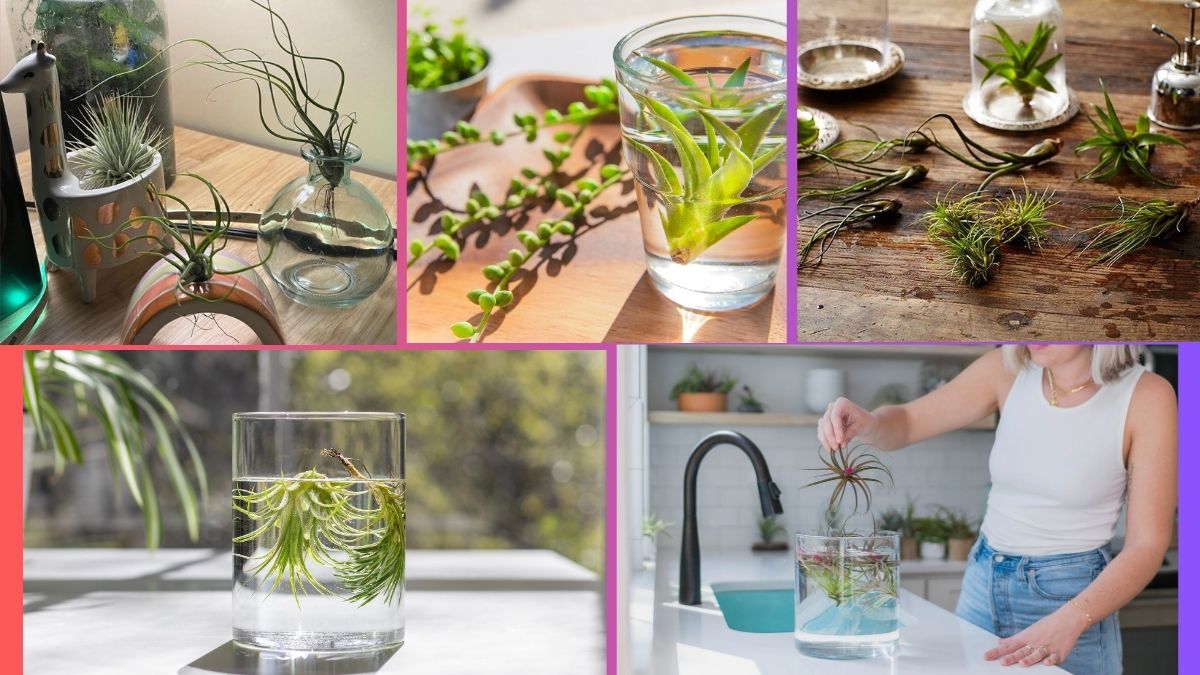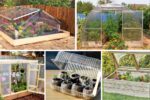Air plants, scientifically known as Tillandsias, are fascinating and unique houseplants loved for their sculptural forms and ability to thrive without traditional soil. Native to the rainforests, deserts, and mountainous regions of Central and South America, air plants absorb moisture and nutrients directly through their leaves via tiny structures called trichomes.
Unlike typical potted plants, air plants don’t grow in soil, making their watering requirements quite different. While these resilient plants can adapt to various conditions, improper watering remains one of the most common reasons for plant decline. So, how often should you water an air plant? This comprehensive guide will provide detailed information on watering frequency, influencing factors, the right watering techniques, and how to recognize signs of overwatering or underwatering to help your air plants thrive.
Understanding Air Plant’s Natural Habitat
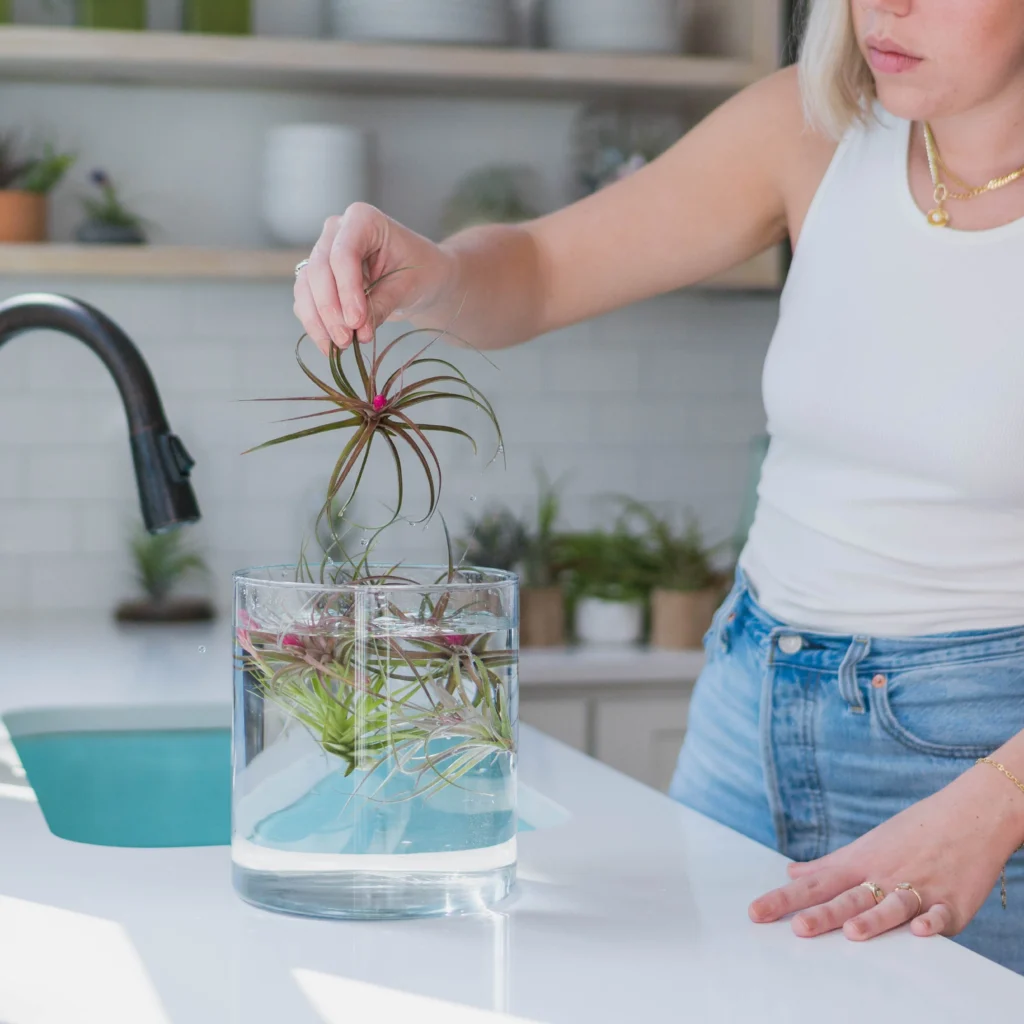
Air plants naturally grow attached to tree branches, rocks, and other surfaces, absorbing moisture from rain, mist, and air humidity. These adaptable plants thrive in:
- High humidity
- Warm, indirect light
- Frequent rainfall with excellent air circulation
Replicating these conditions indoors is crucial for their health and longevity, especially since the home environment tends to be drier.
How Often Should You Water an Air Plant?
1. General Watering Schedule
A general guideline for watering air plants is:
- Submerge or mist your air plant 1–3 times per week during warm, dry months (spring and summer).
- Reduce to once a week or every 10–14 days during cooler months (fall and winter) when growth slows and indoor humidity drops.
However, this frequency varies based on temperature, humidity, plant size, species, and light exposure.
Key Rule:
Always allow your air plants to dry completely after watering to avoid rot.
Factors Affecting Air Plant Watering Frequency

To determine the ideal watering routine for air plants, consider the following environmental factors:
1. Temperature and Season
- High temperatures (above 24°C/75°F) increase evaporation, requiring more frequent watering.
- In cooler conditions (below 18°C/64°F), air plants need less water.
Tip: Increase watering frequency during heatwaves or dry, windy conditions.
2. Humidity
Air plants prefer moderate to high humidity (50–70%):
- In dry, air-conditioned, or heated environments, water more often.
- In humid, tropical areas, reduce watering frequency.
Tip: Use a hygrometer to monitor indoor humidity and adjust watering accordingly.
3. Light Exposure
Air plants grown in bright, indirect light dry out faster and require more frequent watering compared to those in low-light areas.
Tip: Avoid direct sun exposure, which can dehydrate air plants quickly.
4. Air Circulation
Good airflow is essential for air plants:
- Promotes quick drying after watering
- Prevents fungal and bacterial issues
Tip: Place your plants in well-ventilated areas, especially after soaking or misting.
5. Species and Plant Size
Some species like Tillandsia xerographica or Tillandsia tectorum are more drought-tolerant due to their thick leaves and dense trichomes, while others like Tillandsia ionantha prefer more frequent watering.
Tip: Research your specific Tillandsia species’ needs.
Best Watering Methods for Air Plants
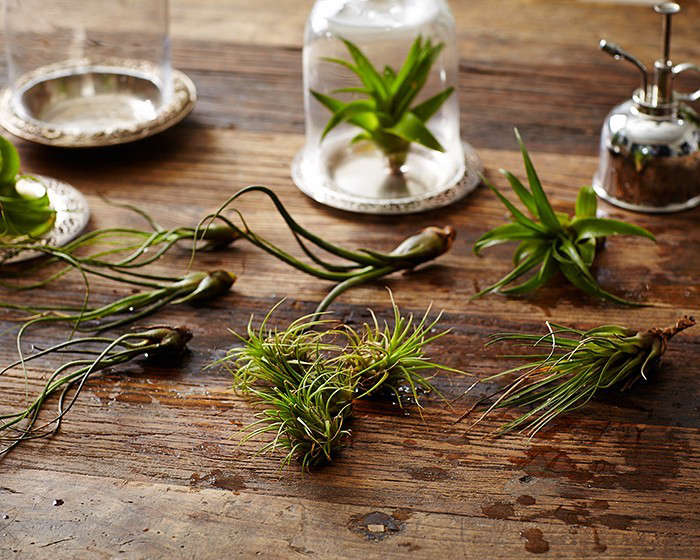
There are three main methods to water air plants. The choice depends on plant size, environment, and personal preference.
1. Soaking
- Fully submerge the plant in room-temperature, non-chlorinated water for 20–30 minutes.
- Shake off excess water and place the plant upside down on a towel to dry.
Recommended Frequency:
Once every 7–10 days (or more often in hot, dry weather)
2. Misting
- Mist the entire plant, including the base and leaves, until thoroughly moistened.
- Ensure proper drying afterward.
Recommended Frequency:
2–3 times per week in moderate conditions or daily in very dry environments.
3. Quick Rinse
- Rinse the plant under running, room-temperature water for a few seconds.
- Shake off excess water and dry completely.
Recommended Frequency:
1–3 times per week, depending on conditions.
How to Check If Your Air Plant Needs Water
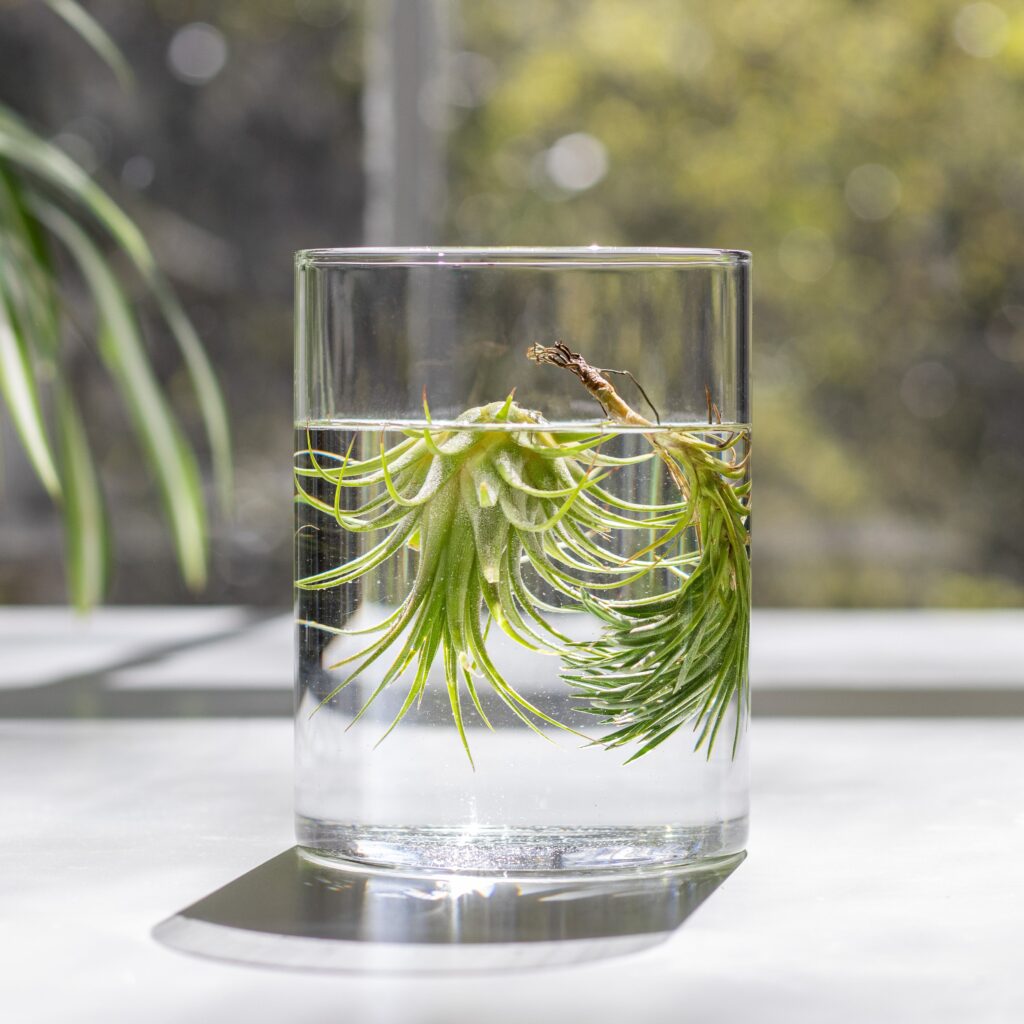
Signs it’s time to water:
- Curled or rolled leaves
- Dry, crispy leaf tips
- Dull, matte foliage
- Light plant weight (if you gently pick it up)
Tip: It’s better to water before leaves show extreme curling or browning.
Signs of Overwatering and Underwatering
1. Signs of Overwatering
- Soft, mushy leaves or base
- Blackened or brown rotting spots
- Foul odor
- Leaves falling off easily
Solution:
Remove affected parts, improve air circulation, and reduce watering frequency. Avoid soaking until the plant fully recovers.
2. Signs of Underwatering
- Curled, shriveled leaves
- Crispy, brown tips
- Leaf drop due to dehydration
- Dull, lackluster appearance
Solution:
Soak the plant for 30–60 minutes to rehydrate, then adjust your regular watering schedule.
Seasonal Watering Guidelines
| Season | Watering Frequency | Tips |
|---|---|---|
| Spring/Summer | Soak once a week or mist 2–3 times | Increase frequency during heat and dry spells |
| Autumn/Winter | Soak every 10–14 days or mist weekly | Reduce watering; avoid cold drafts and soggy conditions |
Common Mistakes to Avoid
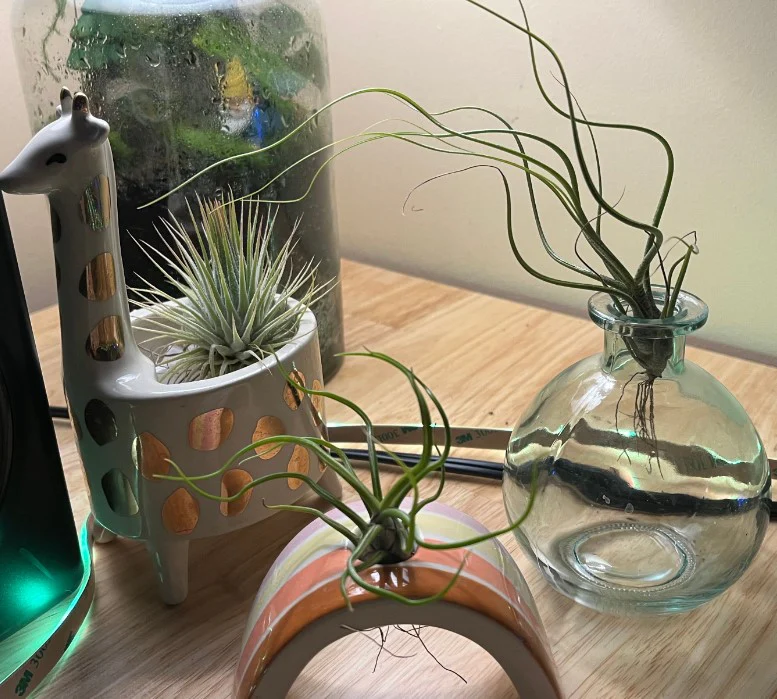
- Leaving water trapped in the base (causes rot)
- Using cold or chlorinated tap water (can damage trichomes)
- Overwatering in winter months
- Ignoring airflow after watering
- Placing in direct, intense sunlight immediately after soaking
Additional Care Tips for Thriving Air Plants
- Use filtered, distilled, or rainwater as air plants are sensitive to water quality.
- Fertilize once a month during the growing season with a bromeliad or air plant-specific fertilizer diluted to half strength.
- Remove dead or dry leaves regularly to maintain plant health.
- Rotate air plants occasionally to expose all sides to light and prevent deformation.
- Group air plants together for a humidity boost but ensure spacing for airflow.
Conclusion
Air plants are versatile, captivating, and low-maintenance houseplants that can thrive in various indoor and outdoor settings when their water needs are properly understood and met.
Generally, water your air plants by soaking them once every 7–10 days in warmer months and every 10–14 days during cooler seasons. Adjust based on your local humidity, temperature, light exposure, and air circulation. Always let plants dry completely after watering and avoid overwatering, especially in winter.
By following these thoughtful watering techniques and closely observing your plants’ condition, you’ll enjoy healthy, vibrant air plants that add an elegant, artistic touch to your living space.
